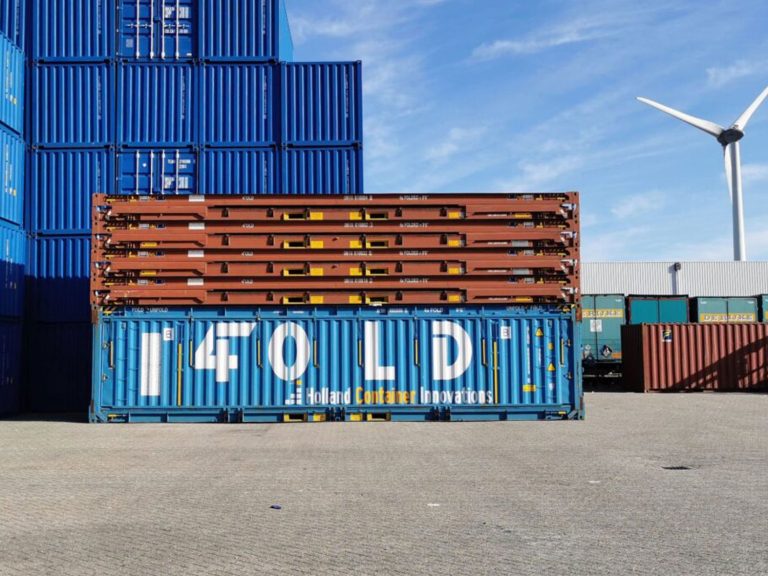
Date:
Foldable containers may be cure. Just not yet…
The bulk of the world’s trade is shipped in intermodal shipping containers, which have remained largely unchanged since IMO standardisation 50 years ago, but innovation may be the key to reducing supply chain congestion. Is this a new era of global container shipping?
Few tools of the global economy have survived without major innovations as long as the shipping container and the continuing pandemic-linked supply chain disruption is presenting a significant opportunity to address that.
As ports, terminals and warehouses get congested with containers, both empty and full, the conditions are increasingly favourable for a product innovation that failed to catch on before the pandemic. Shipping containers that collapse to as much as one-fifth their usual size.
The cost of repositioning empty containers to places where they’ll be loaded is about $20 billion, according to the Boston Consulting Group and many will spend days and weeks taking up space in already-jammed holding areas and depots, compounding delays along supply chains.
In 2013, the Dutch container company 4Fold’s 40-foot metal boxes became the first foldable units to get certification from the Container Safety Convention and International Organisation for Standardisation, meeting standards required by shipping lines, terminals and rail companies.
Today more than 15 carriers, shipping via 60 ports worldwide are testing the Delft, Netherlands-based company’s environmentally friendly containers that can be folded into a quarter of their volume, taking up less space on trucks, ships and docks.
The world’s largest shipping line, Maersk, has referred to foldable containers as the “dream of the shipping industry” and leading consumer-goods producers, including Procter & Gamble, are also testing the technology.
Despite sparking hope among carriers and shippers, as the answer to making equipment available more quickly, higher upfront costs and hesitancy to turn to a new business model have so far kept foldable containers from becoming mainstream.
As companies find themselves more pressed to find answers to supply-chain congestion, the trade-offs of investing in a new technology might become smaller. The US-based foldable-container company Staxxon LLC gained full certification for its 20’ product at the height of the pandemic and is planning to put them on the market next year, suggesting it has dozens of potential buyers who’ve indicated interest.
Carriers could save up to 57% in inland transportation costs by relying on foldable containers, according to Singapore University. And despite higher purchase and annual maintenance costs, foldable units would still be a more cost-beneficial option, their research found.
The challenge is defining the optimal mix of foldable and regular containers that carriers should maintain in their inventory.
Too many and the purchase costs could offset the benefits. Too few and you would struggle to find three other foldable containers to create the single unit, that generates efficiency and cost-savings.
Metro are innovators and we will be watching the development of this story with interest. And ready to actively participate in testing, evaluating or investing, in the best interests of our customers.
We also own many of thousands of containers ourselves within our group of businesses – so know what we are talking about. Please direct any questions or requests for creative solutions to Elliot Carlile who is heading up the programme for Metro clients.
Header image courtesy of HOLLAND CONTAINER INNOVATIONS NEDERLAND B.V.
